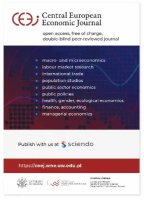Classification of Open-End Investment Funds Using Artificial Neural Networks. The Case of Polish Equity Funds
Classification of Open-End Investment Funds Using Artificial Neural Networks. The Case of Polish Equity Funds
Author(s): Katarzyna Perez, Małgorzata SzczytSubject(s): Economy, Financial Markets
Published by: Wydawnictwa Uniwersytetu Warszawskiego
Keywords: open-end investment fund classification;equity funds;artificial neural networks;emerging market
Summary/Abstract: In this study we utilise artificial neural networks to classify equity investment funds according to two fundamental risk measures—standard deviation and beta ratio—and to investigate the fund characteristics essential to this classification. Based on a sample of 4,645 monthly observations on 37 equity funds from the largest fund families registered in Poland from December 1995 to March 2018, we allocated funds to one of the classes generated using Multilayer Perceptron (MLP) and Radial Basis Function (RBF). The results of the study confirm the legitimacy of using machine learning as a tool for classifying equity investment funds, though standard deviation turned out to be a better classifier than the beta ratio. In addition to the level of investment risk, the fund classification can be supported by the fund distribution channel, the fund name, age, and size, as well as the current economic situation. We find historical returns (apart from the last-month return) and the net cash flows of the fund to be insignificant for the fund classification
Journal: Central European Economic Journal
- Issue Year: 8/2021
- Issue No: 55
- Page Range: 269-284
- Page Count: 16
- Language: English

